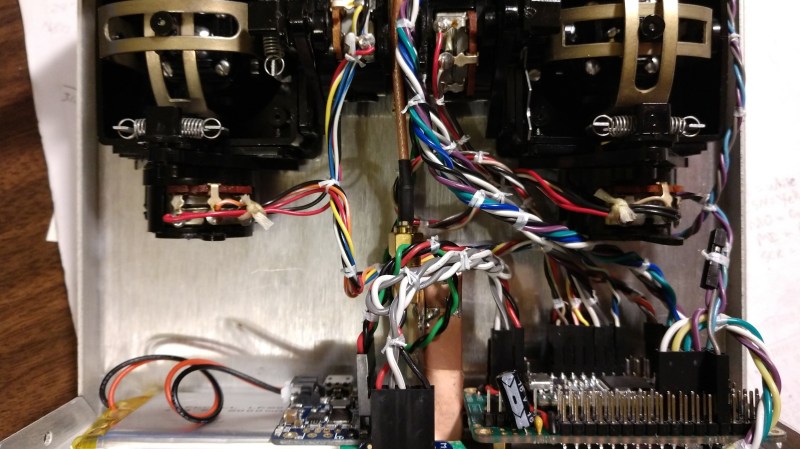If you have lots of RC creations about, each with their own receiver, you’ll know that the cost of a new one for each project can quickly mount up – despite RC receivers being pretty cheap these days. What if you could use a NRF24L01+ module costing less than $3?
That’s just what [Rudolph] has done for his Hackaday Prize entry, rudRemote. Though many people already spin their own RC link with the NRF24 modules, this sets itself apart by being a complete, well thought out solution, easily scalable to a large number of receivers.

The transmitter can be made of anything to hand; stick an NRF24 module and Teensy inside, some gimbals if needed, and you have a rudRemote transmitter. Gaming controllers, sandwich boxes and piles of laser cut parts are all encouraged options. [Rudolph] used some 40-year-old transmitters for his build – on the outside they remain unchanged, apart from a small OLED and rotary encoder for the function menu. The gimbal connections are simply re-routed to the Teensy I/O.
The protocol used is CRTP (Crazy RealTime Protocol); this is partly because one of the things [Rudolph] wanted to control is a CrazyFlie quadcopter. It’s a protocol that can easily be used to control anything you like, providing it fits into the 29-byte payload space. The CrazyFlie only uses 14 bytes of that, so there’s plenty of headroom for auxiliary functions.
We’d be interested to see the latency of this system – we’ve some surprising results when it comes to measuring cheap RC transmitter latency.




















You beat me to it,
i was literally busy building this,
well done,
Interesting, but as best I can tell reciprocity wouldn’t be as simple. As in using this transceiver in an older product designed to be controlled remotely by radio. Not that it couldn’t be done, if additional circuitry use to handle the higher current older servos may need.
A way to repurpose those old, illegal to use, analog FM and AM radios.